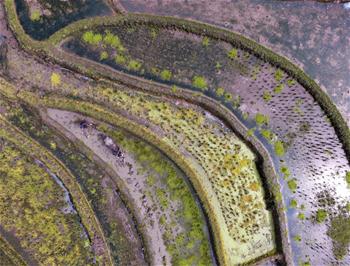WELLINGTON, March 8 (Xinhua) -- New Zealand physicists on Wednesday claimed to have found a way to control individual atoms, making them "visible" wherever they want.
And the Otago University scientists said the applications of the achievement might be in technologies yet to be developed, although they could include super fast quantum computers for calculations of extreme complexity.
"Time will tell what the applications will be. It is likely the main applications will be in technologies we have not yet thought about," lead researcher Dr Mikkel Andersen said in a statement.
The team accomplished the feat, using seven lasers, with components from compact disc players, and precision mirrors.
"We cool the atoms, hold them, change how they affect each other and make them visible by shining laser light, with different frequency and intensity, on them. We make repeated use of the phenomenal degree of control one can have over the frequency of laser light, which is a truly astounding feature of lasers," he said.
Dropping the temperature of the atom to almost absolute zero (minus 273 degrees centigrade), eliminated "random wobbling," allowing it to reach a quantum state with high purity.
"This represents the ultimate control over individual atoms," said Anderson.
"We are pushing the boundaries for the level of control that scientists can have over microscopic systems. Technical revolutions our society has undergone in past decades largely, if not entirely, originate from being able to control systems at a smaller and smaller scale."
The accomplishment followed an international breakthrough in 2010 when the six-strong team isolated and captured a neutral rubidium-85 atom, and then photographed it for the first time.
"This has been a long journey. This is what we have been trying to get to for 10 years," Andersen said.
The next steps would be investigations of how two atoms being brought together could exchange properties, and building molecules in particular quantum states from individual atoms.












